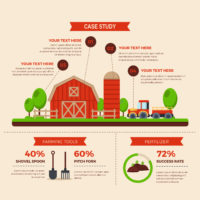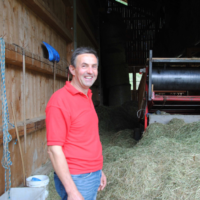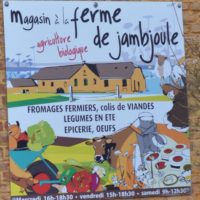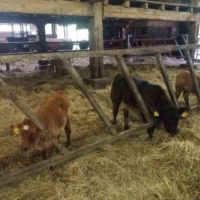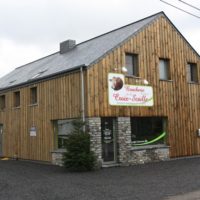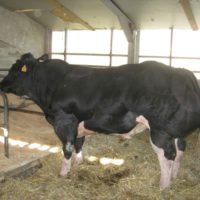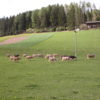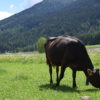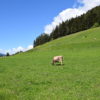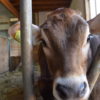Description
The innovation at a glance
Strengths
- The farm generates about 50% of its total income from agriculture and has other economic mainstays (farm holidays and other activities in the tourism sector). This makes it financially possible to try out new developments in the agricultural sector
- Reduction of working time and facilitation of work during the summer months due to the grazing management system
- Sustainable production method with few external imports (nutrients and feed)
- Efficient use of existing resources and well thought-out, targeted and cost-effective investments
Prerequisites/weaknesses
- High motivation and conviction of one’s own actions, broad technical knowledge and skills of the farmer as well as continuous search for solutions and improvements
- Flat or just little steep pastures located around the farm buildings and connected one with another, allowing for a high proportion of grazed herbage in the feed ration
- Cattle breeds suitable for grazing, which in summer can cover their own energy needs through grazing
- Acceptance in the shift of the measure of one’s own farm success from the maximum yield (revenue-oriented) to the economic productivity of work (income-oriented) should be given
- Minimal use of concentrates due to high forage quality, which is achieved, among other things, thanks to the short sward grazing (German: Kurzrasen-weide) in summer and to a well-functioning drying system combined with dehumidifier and photovoltaic modules
A deeper insight
Economic factors
Prerequisites/weaknesses
- Willingness to shift the production target from maximum revenue to maxi-mum profit (per working hour)
- Sufficient grazing areas located around the farm buildings and connected one with another
- Cattle breeds able to cover their own energy requirements from grazing and hay (in the first 100 days, an additional cereal mixture with 10% protein is fed)
- A well-functioning drying system and dehumidifier are necessary to guarantee proper forage quality
- The grazing system of the short sward grazing requires a learning phase (by measuring the grass height); a constant observation of grassland and a fast reaction to changing weather conditions is necessary
- The handling of the herd must be learned
- Organic haymilk is paid for as conventionally produced haymilk, as the local dairy currently does not offer organic pasture milk in its product range
- The membership in the South Tyrolean regional organic farming association (Bioland) is associated with costs and conditions
- Currently, there is a low demand for the animals bred on-farm (small-framed animals with an average milk yield of 6,000 kg milk/year are the target)
- In the last ten years, five animals probably died of clostridiosis; in one case, the infection of Clostridium sordellii was proven. A vaccination did not stop the casualities. It is suspected that these soil-borne pathogens are ingested by the grazing animals with the herbage.
Strengths
- Lower forage production costs (without taking stable work into consideration) compared to 20 farm in the Pusteria Valley at altitudes between 808 m and 2,084 m above sea level and slope inclinations between 3.5% and 76% (35% of average costs per ha and 26% of average costs per dt forage)¹
- A reduction of the working time as well as a work simplification, both on the field and in the stable, is given by the grazing system in comparison to mowing during the pasture period
- Grazing saves costs in comparison to the otherwise necessary forage production
- Enhanced independence from off-farm forage and concentrate purchase
- The system is compatible with another part-time job
Social factors
Prerequisites/weaknesses
- Personal conviction regarding the production method, honest and authentic image of the farmer and its farm
- Professional competence, motivation and the constant search for further development and improvement should be given
- The pioneering role of the farm manager is a challenge for the family; the family should support the conviction and ideology of the farmer
- Some scepticism and questioning of the system by other farmers (if some-one runs ahead, the other do not follow or do not want to follow)
- The curiosity of many passers-by and tourists about grazing leads to frequent interruptions during work due to their questions to the farmer
- The frequent cross-company use of machinery (machine-ring) confronts the farmer also with statements that he lives at the expense of other farmers
Strengths
- Grazing fulfils the landscape image of cows on the pasture, which is desired by the public opinion, including passers-by and tourist. This positive image is enhanced by the calves being carried along in the herd and staying with the mother during the suckling period (female calves for three months, male ones for seven months)
- The opening of a farm shop could be taken into consideration, since many curious passers-by stop because of the grazing animals
Environmental factors
Prerequisites/weaknesses
- The size of the grazing area must be adapted to the livestock; a quick reaction to the weather conditions during the vegetation period is necessary and therefore a good planning of grazing and cutting as well as a certain flexibility is required
- The genetics of the animals should be adapted to the feeding potential, i.e. breeds suitable for grazing management
- Proximity to the main road requires fencing of the pastures and constant monitoring of the herd in order to be able to react in time to a possible breakout. This is the main reason why the farmer does not practice night grazing
- The early utilisation by mowing and grazing as well as the frequent utilisation practiced with the short sward grazing requires an appropriate botanical composition with species tolerating a high defoliation frequency and animal trampling
Strengths
- The early mowing and the following short sward grazing, combined with a targeted overseeding, results in a dense sward with low weed pressure
- Sustainable production with little off-farm import (nutrients and small forage quantities)
Technological factors
Prerequisites/weaknesses
- The innovation consists of the combination of several innovative elements
- Investments focus on achieving good roughage quality
- Efficient use of existing operation material resources as well as targeted and cost-effective investments (equipment, machines; conversion of a tie-stall into a loose housing stall may be necessary; aeration system and dehumidifier ensure the best possible roughage quality)
- Minimize energy use (installation of photovoltaic modules to save electricity costs – average drying costs of 2.5 cents/kg hay, under bad weather conditions up to 4.5 cents/kg hay)
- For the optimal use of the photovoltaic system, a specific roof shape and the southern exposure of the barn are required
- Innovative indoor management of slurry removal in order to ensure trouble-free operation even at sub-zero temperatures: Normally, the slurry is first pushed by the manure removal system into channelways at the floor surface and then further transferred into the pit. On this far, the slurry is transferred directly into the pit
Strengths
- The farmer does not buy his technologies, he rather invents and develops them himself and designs them according to his needs
- Cost-effective, well thought-out construction of the new stable and barn (use of wood from the own forest)
- High roughage quality thanks to well-functioning drying system, combined with dehumidifier and photovoltaic modules (thus reducing costs)
- Very well-functioning cross-company machine utilisation on a trust basis
- Reducing the consumption of agricultural fuel (from 3,000 litres to 1,700 litres since the introduction of pasture)
- The costs for hay drying have been significantly reduced since the construction of the new drying plant
Legal factors
Prerequisites/weaknesses
- The minimum cultivation (all grassland is mown at least once during the growing season) is one of the aspects required by the measure 11 Organic farming of the rural development policy and thus a criterion for receiving the EU payment
- The production of haymilk restricts the fertilisation of pastures with slurry, because a minimum interval of 21 days between fertilisation and grazing/ forage harvesting is required. During the grazing period, this makes fertilisation and an adequate supply of nutrients to the pasture more difficult with the intensive system of short sward grazing.
Political factors
Prerequisites/weaknesses
- Different production lines should be accepted in agriculture and find their place, even if the development will require some time
- Currently, each organic association has its own guidelines. The competition between the associations is actually negative for the image of organic farming, therefore uniform guidelines for all organic associations would be advantageous
- Basically, politics should give innovations more room and support for their development
What the innovator says about his innovation
Would you do it again?
Yes, I would definitely follow this path again.
What would you do differently?
I would seek a broader consensus when implementing my ideas and would no longer realise all ideas immediately, because the society is fundamentally afraid of changes.
In the past, it was not always easy for me in this pioneer role. I was often confronted with envy and lack of understanding, but basically, I believe the path taken is the right one for me and that the acceptance from outside will come with time.
Would there be enough market available in your village for three other farmers implementing your innovation?
Yes, there would be a lot of potential for organic farming and production, as well as for grazing. Even if there is a headwind from the outside, I’m convinced that the path can be viable and rewarding.

